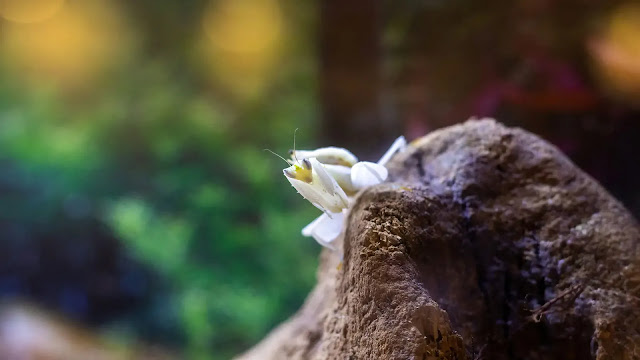The animal kingdom is home to both mimicry and camouflage, particularly in prey species. Animals hide themselves with colors, patterns, and other elements of their surroundings. While some animals may blend in with their surroundings permanently, others have unique skin that may vary in texture and color. A comparable idea is mimicry, where one animal mimics the look, behavior, or color of another animal or plant. Certain creatures, such as leaf mimics, have body parts or wings that imitate withered leaves. Certain insects bear striking resemblances to the eyes of larger animals.
1: Viceroy Butterflies
Many birds and other insect-loving predators would find the Viceroy butterfly to be a delightful delicacy, but throughout evolution, it has evolved to resemble the less appetizing Monarch Butterfly almost exactly. The Viceroy can withstand the majority of casual examinations because of the replica markings, which don't quite match.
The majority of insects are poisoned by milkweed plants, where monarch butterflies lay eggs. But the monarch has changed to the point that its larvae consume milkweed. They thus turn poisonous to the birds that would eat them. When individuals pupate into butterflies, they carry this feature with them. Because eating monarchs makes them sick, birds know to avoid doing so.
2: Lichen Katydid
The lichen katydid's elaborate camouflage aids in its concealment in beard lichens, sometimes referred to as old man's beard, which serve as its main food supply and habitat. Its legs are clothed in spiky projections that resemble the lichen's offshoots, and its camouflage blends in with the lichen's soft green color. In South and Central America tropical rainforests, the lichen katydid can be found in the canopy.
3: Anglerfish
The anglerfish is another well-known animal that uses mimicry to survive. Although this fish appears quite ugly to the naked eye, its mimicking mechanism makes it incredibly alluring to gullible prey. Deep in the water, the female anglerfish uses her flashing dorsal spine to tempt larger fish to feast on it. The spine dangles in front of the mouth like a fishing pole.
4: Pygmy Seahorse
Which animals use mimicry to survive? We can't forget pygmy seahorses. Pygmy seahorses can mimic the hue and texture of surrounding coral by sprouting tubercles and changing their color. Being among the smallest seahorses, they would be a simple meal for many predators if they weren't able to blend in with their surroundings. Their natural color is a dark brown, but they change to mix in with the particular sea fan that they find to be their favorite habitat.
5: Stick Bug
Most people are probably most familiar with the stick bug, which is also referred to as a walking stick. The name explains everything. It's a bug that took on a stick-like appearance millions of years ago. There are three thousand different species of stick insects in the world. As a result, just as no two trees are alike, neither are stick insects. Stick bugs resemble the sticks that grow in their natural habitat, which are trees. This implies that their sizes also differ significantly, with the biggest stick bugs measuring an amazing 21 inches!
6: Spicebush Swallowtail
The spicebush swallowtail has big eyespots that resemble snake heads and a vibrant green color when it is in its caterpillar form. Its most striking resemblance is to the eastern United States' native smooth green snake. Since birds frequently prey on caterpillars, their mimicry acts as a defense strategy. A retractable Y-shaped body part called an osmeterium, which mimics a snake's forked tongue, adds to the deceit. The osmeterium emerges in response to danger and releases a substance that deters some predators.
7: Orange Oakleaf
The orange oakleaf looks like a dried-up, dead leaf when its wings are closed. Its camouflage was so complex that its wings could mimic the veins on a leaf. But when its wings are spread, they reveal a striking pattern of blue, black, and yellow. Predators often include birds. By descending to the ground or folding the wings to resemble leaf litter, the butterflies will avoid them. Native to tropical parts of Asia, ranging from India to Japan, it's the orange oakleaf.
8: Leafy Sea Dragon
With leaf-like appendages that help it blend in with kelp forests and seaweed, the leafy sea dragon is related to the sea horse. Because it is not a strong swimmer, it uses this disguise to keep predators away from it. Only the waters off the coast of southern Australia are home to sea dragons. Its distinctive look made it popular as an aquatic pet, which by the 1990s had led to a notable reduction in the population. After being designated as a protected species by the Australian government in 1999, the sea dragon's population has increased.
9: Orchid Mantis
A related species of the praying mantis, the orchid mantis has amazing flower-like camouflage, and among the animals, it uses mimicry to survive. Southeast Asian rainforests are home to it. It deceives butterflies and other pollinators, which are its favorite food sources, by perching on flowering plants. It possesses powerful, spiny forelegs, like all mantids, that allow it to catch its prey out of the air, even though the back legs are very decorative.
10: Pharaoh Cuttlefish
A mollusk with the ability to quickly change its skin tone and texture to blend in with its environment is the pharaoh cuttlefish. Its skin is made up of hundreds of pigment-filled organs called chromatophores, which are capable of changing color, and also dermal muscles, which may contract and relax to modify the texture of the skin.
The pharaoh cuttlefish mimics the motion of a hermit crab by extending and flapping its arms when searching. A study indicated that cuttlefish that used this approach captured twice as many fish as the ones that did not, leading researchers to assume that this behavior may be a means of disarming their prey.
Related Post:










